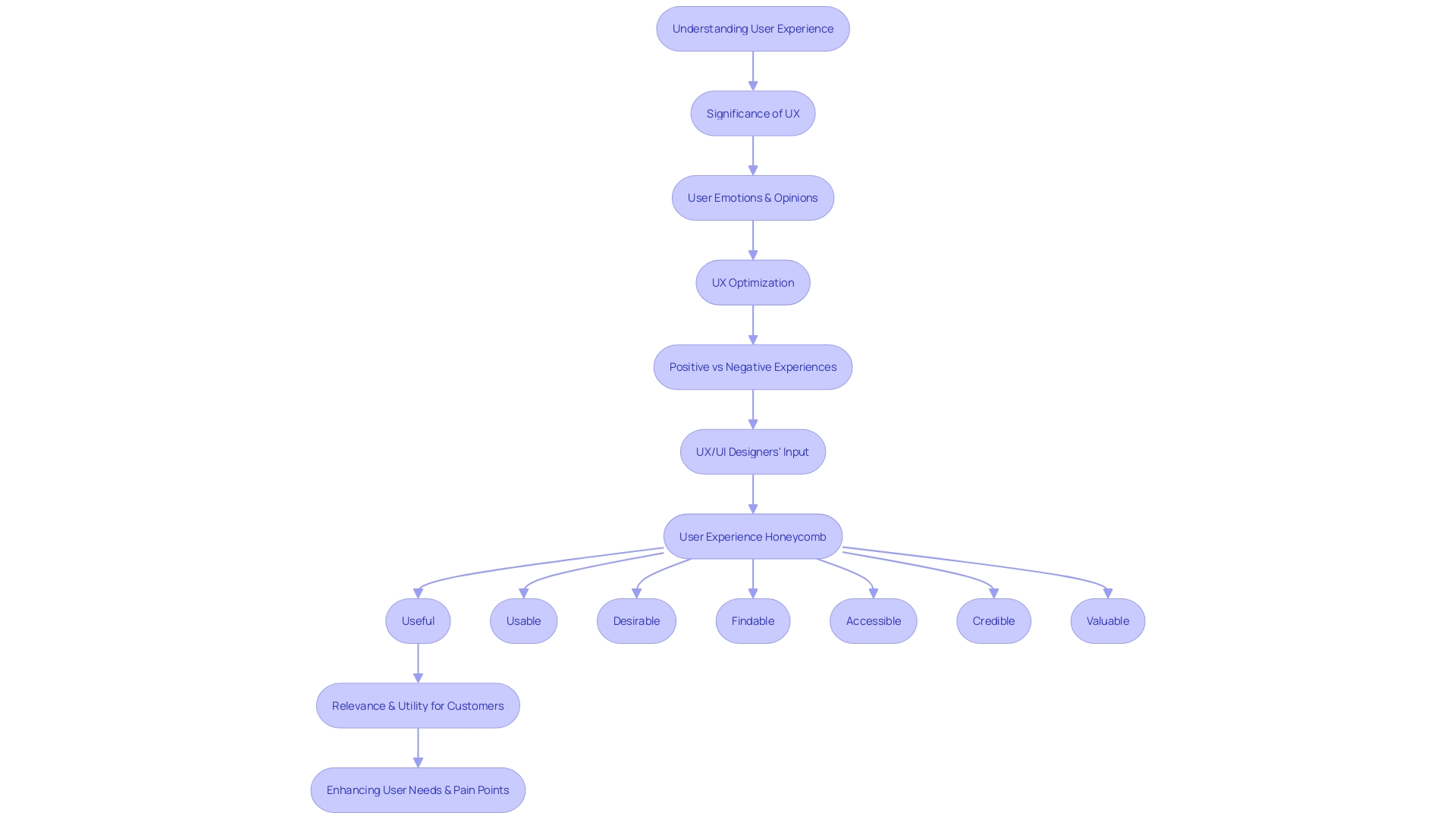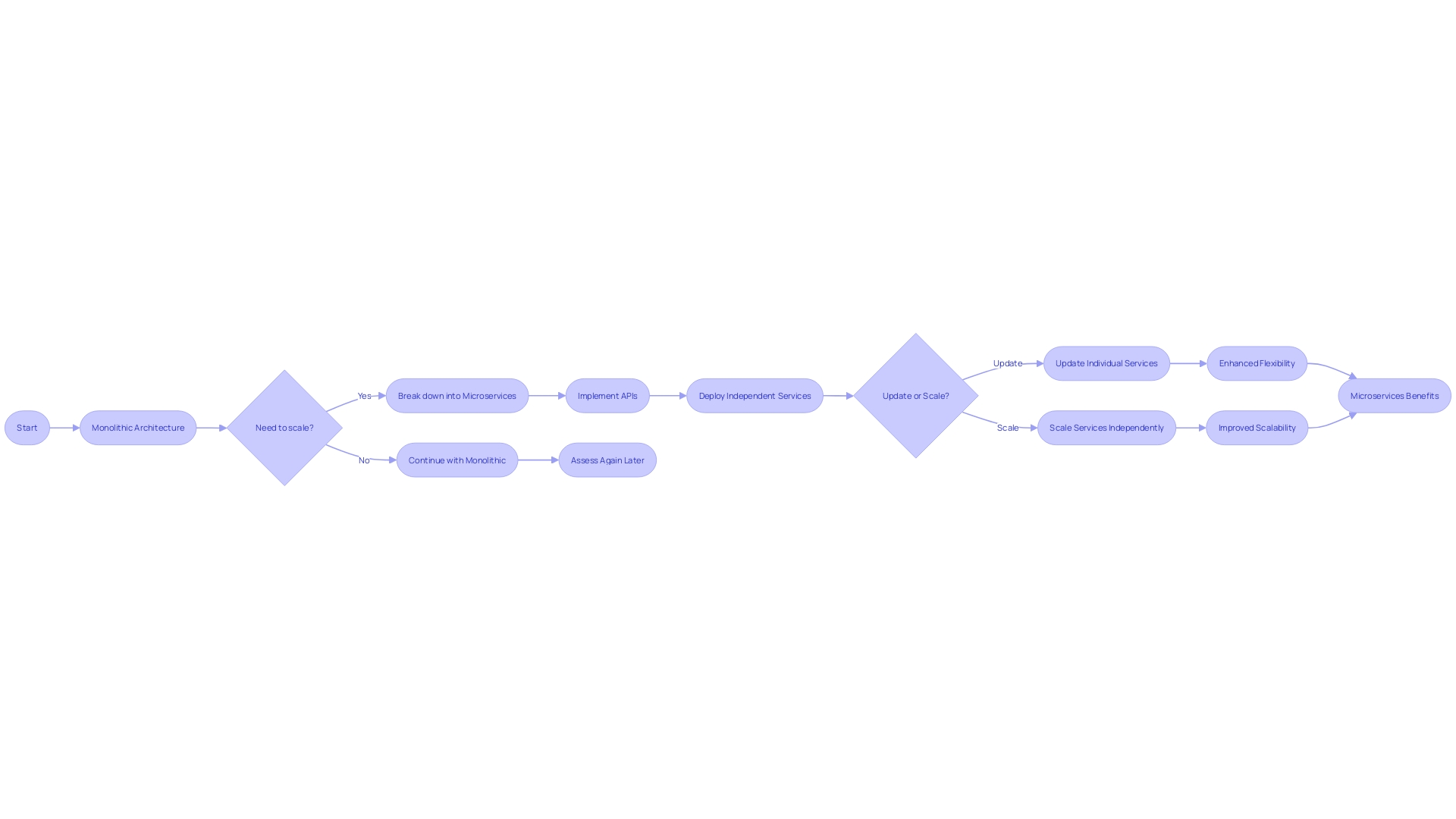Introduction
A robust e-commerce architecture is essential for success in the ever-evolving online marketplace. It serves as the foundation for your platform, allowing you to adapt to emerging trends, integrate cutting-edge technology, and meet the increasing demands of consumers. As an industry expert, it is crucial to understand the importance of scalability, performance, security, and optimization in building a successful e-commerce platform.
From choosing the right infrastructure to leveraging cloud hosting services like AWS, there are key components and modern approaches to consider. Implementing microservices, API-first design, and cloud-native frameworks can enhance flexibility and agility. Furthermore, ensuring security and data protection through SSL certificates, secure payment gateways, and adherence to data privacy regulations is paramount.
By optimizing your e-commerce architecture, you can create a seamless user experience, enhance performance, and stay ahead of the competition.
Importance of E-commerce Architecture
A robust e-commerce architecture is more than just a foundation; it's a dynamic blueprint that adapts to emerging trends, integrates cutting-edge technology, and scales to meet ever-increasing demands. As the e-commerce landscape evolves, driven by advancements in artificial intelligence and changing consumer behaviors, the architecture that underpins your platform must be agile, secure, and capable of delivering a seamless user experience.
The architecture of an e-commerce platform is a composite structure, designed to handle the intricacies of online shopping. It's about creating a system that's not only efficient but also resilient enough to handle peak traffic during high-volume sales events, like Amazon's Great Indian Festival. The focus is on scalability - a concept which, simply put, means ensuring that every user enjoys the same flawless experience regardless of when or where they shop.
To achieve this, it's essential to start with the right infrastructure. By leveraging cloud hosting services like AWS, businesses can build powerful infrastructures that combine robust servers, firewalls, and encryption tools. This infrastructure forms the backbone of your e-commerce platform, enabling you to optimize databases, manage content distribution, and ensure that your platform remains robust in the face of rapid growth and changing market conditions.
For core functions such as order processing, inventory management, and customer interaction, serverless architecture can be a game-changer. It allows for the scaling of services without the need to manage servers, making it an ideal solution for businesses aiming to modernize and streamline their operations.
However, scalability isn't just about handling more users; it's also about maintaining performance. Performance in e-commerce means how swiftly a website responds to user requests. This quick response is crucial for a frictionless shopping experience from browsing to checkout. As you scale, the architecture should sustain performance, ensuring that adding resources like servers translates directly into enhanced speed and site responsiveness.
In conclusion, a successful e-commerce platform rests on an architecture that embraces scalability, performance, and the latest technological trends. By building a solid, adaptable architecture, you ensure that your platform not only meets current demands but is also poised for future growth and innovation.
Types of E-commerce Architectures
Navigating the complexities of e-commerce architecture is akin to constructing a robust infrastructure, which is essential for businesses aiming to modernize and scale. The architecture you choose serves as the backbone of your online platform, enabling you to manage inventory, streamline product management, and enhance customer experiences.
Microservices architecture has surged in popularity due to its modular nature, where applications are broken down into smaller, independent services. Each service, such as inventory or catalog, functions autonomously and interacts through well-defined APIs. This approach facilitates a flexible and resilient system, where each component can be updated or scaled without affecting the entire platform. A compelling example includes Amazon's recent ventures, such as their Second Chance Store, where microservices likely play a crucial role in managing diverse product categories and customer interactions seamlessly.
In contrast, a monolithic architecture is more akin to a single, large entity where all components are intertwined. While this may offer simplicity in deployment, it can pose significant challenges in scalability and maintenance. Startups often grapple with the decision between these two paradigms, as the wrong choice can lead to failure, while the right one can provide a significant competitive edge. The decision hinges on specific application needs and how you envision your infrastructure evolving with your business.
Therefore, as you ponder on the architectural style that best suits your e-commerce platform, consider the agility and independence offered by microservices. They represent the LEGO bricks of system design, granting you the flexibility to adapt to market demands and customer needs swiftly. Reflect on the success stories from the Indian e-commerce market, where dynamic architectures have enabled rapid growth and innovation, and let those insights guide your architectural strategy.
Key Components of E-commerce Technical Architecture
Constructing a robust e-commerce technical architecture is akin to building a well-oiled machine, where each component plays a critical role in delivering a seamless online shopping experience. Central to this architecture are the web server, application server, database, caching mechanisms, and content delivery network (CDN). Each element serves a distinct function: web servers manage client requests, application servers handle business logic, databases store data, caching mechanisms accelerate content retrieval, and CDNs distribute load, enhancing global access and speed.
A scalable infrastructure is paramount for modern e-commerce businesses aiming to thrive. By leveraging the synergy of advanced technology, sturdy servers, firewalls, and encryption tools, e-commerce platforms can handle burgeoning traffic and complex transactions with ease. Cloud hosting solutions like AWS simplify the creation of such scalable systems, relieving business owners from the arduous tasks of optimizing databases and maintaining hardware.
The importance of a unified product database cannot be overstated. It ensures accurate inventory tracking and efficient product search and filtering, which are facilitated by denormalizing product data across various services and consolidating them into a central catalog database. This mechanism enables real-time updates on product availability, a critical component in customer satisfaction.
Real-world applications of these principles are evident in the latest retail innovations. For instance, the Dublin Town To Go store, utilizing Zippin technology, exemplifies the seamless integration of cameras and sensor-equipped shelving, providing a checkout-free shopping experience and showcasing the potential of e-commerce technology in physical spaces.
As e-commerce continues to evolve, driven by AI and other cutting-edge technologies, understanding and implementing these key architectural components will be instrumental in crafting a responsive, reliable, and engaging online retail environment.
Creating a Website Architecture for E-commerce Websites
Crafting the architecture of an e-commerce website is a critical task that directly impacts user experience and conversion rates. A well-designed structure accommodates the dynamic nature of online shopping, where artificial intelligence is increasingly used to tailor experiences for each customer. For instance, as we explore the labyrinth of e-commerce website creation, we delve into designing intuitive user interfaces that resonate with the consumers' journey, organizing product catalogs that reflect the latest trends, and implementing shopping cart systems that streamline the path to purchase.
To ensure an architecture that supports robust functionality, integration of payment gateways is meticulously planned. This not only facilitates secure transactions but also enhances customer trust. The design phase also involves establishing clear, repeatable patterns and systems that can be applied across various pages, ensuring consistency and ease of navigation.
As the e-commerce sector thrives, covering a multitude of industries from retail to hospitality, it becomes essential to comprehend the intricacies of modern e-commerce systems. The architecture weaved must be agile enough to adapt to rapid market changes, such as the inclusion of new beverage categories or the latest in tobacco products, all while maintaining a seamless shopping experience. The goal is to create a responsive, user-friendly, and effective e-commerce website that stands at the forefront of the industry's growth.

Scalability and Performance in E-commerce Architecture
Navigating the complexities of e-commerce architecture is akin to constructing a high-tech metropolis. As your digital landscape expands, embracing scalability and performance is pivotal. Consider the journey of PayPal, which, back in 1998, witnessed a meteoric rise in user traffic. Its engineering team, including luminaries like Max Levchin and Joe Lubin, promptly scaled their infrastructure to accommodate over a million daily transactions by employing a fleet of virtual machines.
Focusing on the e-commerce front-end, Dunelm Group's strategy mirrors this approach. With their digital platform accounting for a significant revenue portion, they transitioned to a distributed system with microservices at the core. When designing for low-latency and secure customer experiences, like an e-commerce portal in Africa, it's essential to prioritize fault tolerance and rapid data retrieval while balancing budget constraints.
Recent innovations, such as the checkout-free Dublin Town To Go store, showcase the seamless integration of technology and commerce. Here, a blend of visual recognition and weight-sensored shelving ensures a frictionless customer experience, hinting at the potential of scalable e-commerce solutions.
While considering scalability, remember the simple yet powerful concept that every user should enjoy a consistent experience regardless of region or time. It's not just about handling traffic but ensuring uninterrupted service during peak periods. As we delve into the design of a scalable system, we acknowledge the need to accommodate ever-increasing user numbers with solutions that are both robust and agile.

Security and Data Protection in E-commerce
Securing sensitive customer information and financial transactions is paramount in e-commerce. E-commerce businesses can enhance security and data protection by employing a multifaceted strategy. SSL certificates are foundational, encrypting data in transit and thwarting eavesdroppers. Securing payment gateways is equally essential; it is advisable to integrate only with gateways that conform to the highest industry standards, such as PCI DSS compliance, to safeguard payment information.
Protection against common threats like SQL injections and cross-site scripting (XSS) attacks is vital. These can be mitigated by implementing rigorous code reviews, employing automated security scanning tools, and staying updated with the latest security patches. Moreover, adherence to data privacy regulations is not just about legal compliance but also about demonstrating to customers a commitment to protecting their personal information.
Real-world breaches serve as sobering reminders of the stakes involved. For instance, an exposed database revealing identification documents and credit card details illustrates the potential fallout from security lapses. This kind of incident underscores the importance of a robust security framework.
Innovative retail technologies, such as checkout-free stores employing Zippin technology at Dublin Airport, show the evolving landscape of e-commerce and the new security challenges that come with it. With advancements like these, the onus is on e-commerce platforms to ensure that innovation goes hand in hand with stringent security measures.
Ultimately, the goal is to foster a secure environment that builds trust with customers, a crucial factor in the success of any e-commerce enterprise. By implementing these best practices, businesses can not only protect their customer data but also enhance their brand reputation and customer loyalty.
Modern Approaches: Microservices, API-First, and Cloud-Native
Modern e-commerce architectures are continuously evolving, offering a myriad of benefits such as enhanced flexibility, scalability, and agility. Among the most notable advancements are microservices, API-first design, and cloud-native frameworks. Microservices architecture, a design where applications are segmented into smaller, independent services, stands in contrast to the traditional monolithic approach where all components are bundled into a single unit. This modular structure, akin to LEGO bricks, allows for greater ease in updating and scaling individual parts of the system without affecting the whole. According to the 2024 Docker State of Application Development Report, the adoption of such architectures is rapidly increasing as they align well with contemporary development practices.
Take Dunelm Group plc, for example. With a significant portion of their revenue stemming from their digital platform, they recognized the need to evolve their software architecture to support their expanding business. Similarly, Netflix's Java Platform, as explained by Java expert Paul, leverages such architectures to ensure developers can efficiently build and maintain Java applications, enhancing their development experience.
TotalEnergies Digital Factory (TDF) offers another illustrative case. They've harnessed APIs to modernize legacy systems, underscoring the importance of agile, responsive architectures in large-scale operations across numerous countries. As reported in the Linux Foundation Research, a survey revealed a trend towards cloud-native techniques, with diverse industries and company sizes embracing these modern approaches.
The retail giant Walmart, in collaboration with POCLab, has even explored the realms of the metaverse, demonstrating the potential of innovative e-commerce architectures to create immersive digital experiences.
As the landscape of e-commerce architecture continues to grow, companies considering a transition should weigh the benefits and challenges carefully. A microservices approach could lead to more resilient and adaptable systems, as evidenced by industry leaders who have successfully implemented such strategies.

Best Practices for Optimizing E-commerce Architecture
To maintain a competitive edge in the dynamic world of e-commerce, it's essential to ensure that your online platform is not just functioning but excelling in its performance. A robust e-commerce architecture goes beyond mere aesthetics; it's about creating an infrastructure that is scalable, secure, and efficient. With the rise of artificial intelligence in the retail sector, personalization has become a critical component of the shopping experience. Tailoring recommendations and ensuring a frictionless user journey can amplify customer satisfaction and loyalty.
In the realm of performance optimization, it is not uncommon for businesses to experience a significant loss of revenue due to sluggish website performance. For instance, a mere one-second delay in page load time during the holiday season could result in a substantial financial impact, with potential losses climbing as high as £28.4 billion according to Retail Technology Review. The importance of a fast and responsive website cannot be overstated, as it lays the foundation for effective conversion rate optimization (CRO). Enhancing user experience by identifying and removing barriers to conversion is paramount, not only for attracting first-time buyers but also for cultivating a base of repeat customers, thereby increasing the lifetime value of each customer.
The process of refining your e-commerce architecture encompasses various elements, from performance testing to ensure the system can handle peak loads, to continuous integration of feedback obtained through A/B testing. Performance testing, in particular, gauges the speed, scalability, and stability of your system, enabling you to pinpoint and address any performance bottlenecks.
Furthermore, database optimization is no longer solely about updating hardware and software. It involves leveraging cloud hosting solutions like AWS to create a scalable infrastructure effortlessly, as highlighted by industry experts. In this context, managing your product data effectively becomes crucial. For instance, employing a denormalized approach to product information allows for real-time updates and seamless search and filter capabilities, which is a cornerstone of a user-friendly shopping experience.
By prioritizing these optimization strategies, your e-commerce platform can deliver exceptional user experiences that align with current trends and consumer expectations, ensuring your business remains at the forefront of the digital retail landscape.
Conclusion
A robust e-commerce architecture is crucial for success in the online marketplace. By embracing scalability, performance, and the latest technology trends, you can create a seamless user experience and stay ahead of the competition. Start with the right infrastructure, leveraging cloud hosting services like AWS for optimal performance and growth.
Implement microservices architecture and API-first design for flexibility and resilience. Ensure security and data protection through SSL certificates and secure payment gateways. Optimize your architecture to deliver exceptional user experiences and stay competitive.
By building a solid, adaptable architecture, you can meet current demands and be prepared for future growth and innovation.





